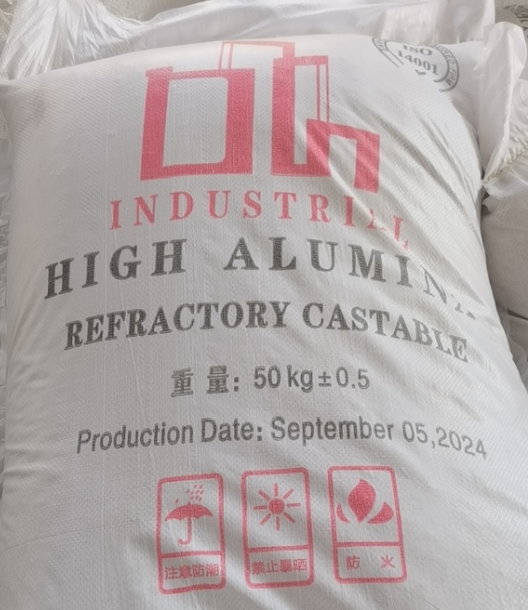Why Is Alumina Suitable as a Refractory Material?
Feb 10, 2025Alumina, or aluminum oxide (Al₂O₃), is a highly versatile material used extensively in a wide range of applications, particularly as a refractory material. Refractory materials are those that are designed to withstand high temperatures and harsh conditions without degrading, making them essential in industries such as steel production, cement manufacturing, and power generation. Alumina’s unique properties make it an ideal choice for many of these applications. In this article, we’ll explore why alumina is particularly well-suited for use as a refractory material.
One of the primary reasons alumina is considered an excellent refractory material is its extremely high melting point of around 2,072°C (3,762°F). This high melting point means that alumina can maintain its structural integrity even under extreme temperatures, making it ideal for use in high-temperature applications such as furnaces, kilns, and reactors. Materials used in these environments must withstand not only the heat but also thermal shock and mechanical stresses, and alumina excels in this regard.
In addition to its high melting point, alumina also demonstrates superior thermal stability. It can maintain its properties even at elevated temperatures without significant degradation. This makes it highly reliable in industries where temperature fluctuations are common, such as in steel mills or glass furnaces. Alumina’s ability to stay stable under thermal stress helps to prevent cracks, warping, and other forms of damage that can compromise the performance of the equipment.
Alumina is also known for its outstanding resistance to chemical corrosion. In industrial environments, materials are often exposed to harsh chemicals, including acids, alkalis, and other reactive substances. Alumina’s inherent resistance to chemical attack allows it to maintain its structural integrity in such corrosive environments. This is particularly valuable in the production of metals and glass, where other materials might break down or degrade in the presence of molten metal or other aggressive chemicals.
Alumina exhibits excellent mechanical strength, even at high temperatures. This strength is important because refractories need to not only resist thermal shock but also endure the mechanical stresses that occur during thermal cycling, such as when equipment is heated up and cooled down. The high mechanical strength of alumina allows it to perform reliably in these demanding conditions, ensuring the longevity and effectiveness of refractories in furnaces, kilns, and other high-temperature applications.
Another key advantage of alumina is its low coefficient of thermal expansion. This means that it expands and contracts very little when exposed to temperature changes, helping to prevent the formation of cracks and fractures over time. Materials with high thermal expansion can experience stress and eventually fail under temperature fluctuations, but alumina’s low thermal expansion ensures it remains stable and durable throughout its lifespan, making it ideal for use in applications where rapid temperature changes occur.
Alumina’s properties make it suitable for a wide range of refractory applications. It can be found in many forms, from alumina bricks used in the linings of kilns and furnaces to alumina castables and monolithic refractories used in high-temperature industrial processes. In addition, alumina is often used as a key component in the production of ceramic refractories and abrasive materials. Its versatility in various forms and applications makes it an indispensable material in the world of industrial refractories.
Alumina is also a relatively environmentally friendly material compared to other refractory options. It is derived from bauxite, a naturally abundant mineral, and is highly durable and resistant to wear, which reduces the need for frequent replacement and waste generation. Additionally, alumina refractories are often reusable, which further contributes to their sustainability. In industries looking to reduce their environmental footprint, alumina is an attractive option for both its performance and eco-friendliness.
In conclusion, alumina’s unique properties—such as its high melting point, thermal stability, chemical resistance, mechanical strength, low thermal expansion, and versatility—make it an excellent choice as a refractory material. Its ability to withstand extreme temperatures, resist chemical corrosion, and maintain strength over time ensures that it remains a vital material in high-temperature industrial applications. Whether used in the steel, cement, or glass industry, alumina continues to be a top choice for manufacturers seeking durable, high-performance refractories.
At DYSen, we supply high-quality alumina-based refractory materials designed to meet the demanding needs of various industries. With our expertise and wide range of products, we are committed to providing solutions that ensure your operations run smoothly and efficiently, even under the harshest conditions.